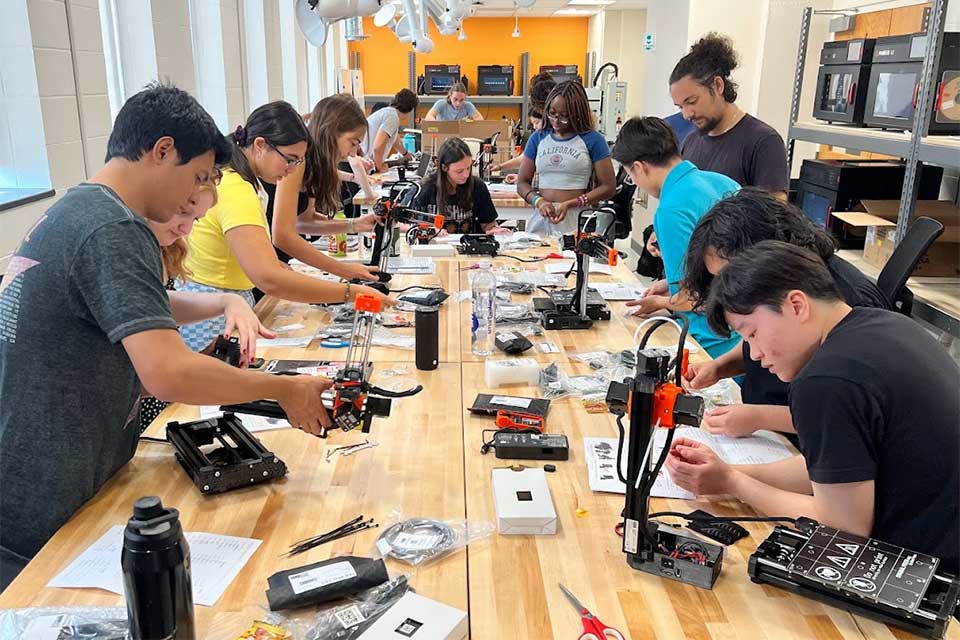Engineering the Future at Brandeis

Photo Credit: Ian Roy
By Lawrence Goodman
For the first time in the university’s history, undergraduates can take engineering courses, in advance of the launch of an engineering major in fall 2026.
The first class, Introduction to Design Methodology, taught by associate professor of physics W. Benjamin Rogers, and director for research technology and innovation Ian Roy ’05, was introduced in fall 2023. The course’s required reading was a classic: “Design for the Real World: Human Ecology and Social Change,” by Victor Papanek.
The engineering major, approved by the Board of Trustees in 2021, will build on the university’s interdisciplinary approach to research, drawing on all aspects of the liberal arts, from history and design to sustainability and ethics. It will seek to develop entrepreneurial engineers who want to make a better world by creating products that are beautiful, functional, and economical.
“We’re not trying to be MIT or Worcester Polytechnic Institute,” Roy says. “We’re trying to take traditional Brandeis values and underpin them with strong engineering methodology.”
Unlike many engineering programs, which often are siloed in a separate school within their institution, the Brandeis program will embed engineering faculty in existing departments across the university.
As part of the inaugural class’s emphasis on designing to help repair the world, the 20 students in Introduction to Design Methodology worked in small groups to create assistive devices. The first assignment involved building an upper-limb prosthesis from an open-source design. The second: Design an assistive device for an individual client, human or animal. Possible ideas included a front-leg wheelchair for dogs, cutlery for individuals who suffer from tremors, or typing aids for people with arthritis. Students mastered the fundamentals of computer-aided design and computer-aided manufacturing. And by working together, Roy says, they learned “engineering isn’t done in a vacuum — it’s a team sport.”
Rogers says the class also gave students a greater understanding of the creative process.
“Creativity is not something that happens from spontaneous inspiration,” he says. “You don’t get struck by lightning and have a brilliant idea. There are systematic frameworks for turning hard work into what looks like inspiration.”
The class was held in a renovated space in the Abelson Physics Building. Rogers and Roy outfitted the space with more than 30 machines, including 3D printers; large-format laser cutters; and full-metal computer numerical control machines for cutting, drilling, milling, and other manufacturing processes.
The inaugural engineering course was open to all Brandeis students without any prerequisites. “I hope this course makes students realize that you can affect your built environment,” Roy says. “You can have an idea in your brain and then produce it. At the same time, we want students to have a bias toward repairing the world with these tools.”
Over the long term, the engineering major is expected to expand the pool of recruitable high school students by about 13,000 annually.